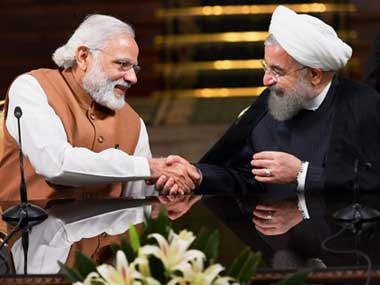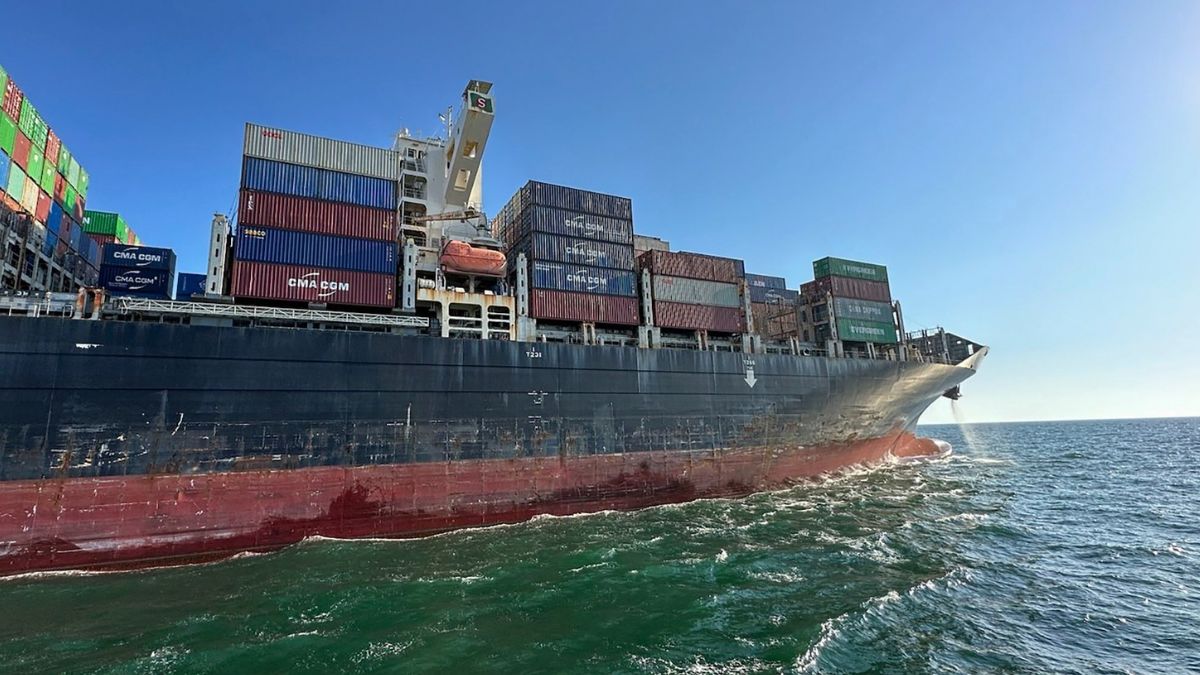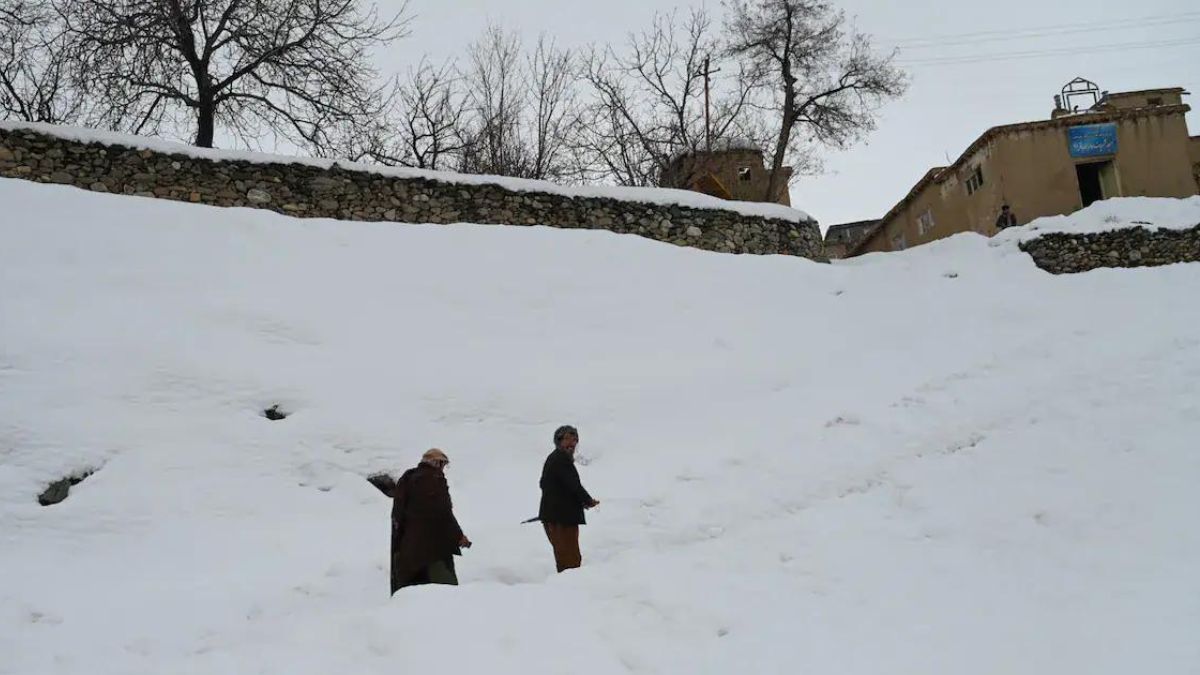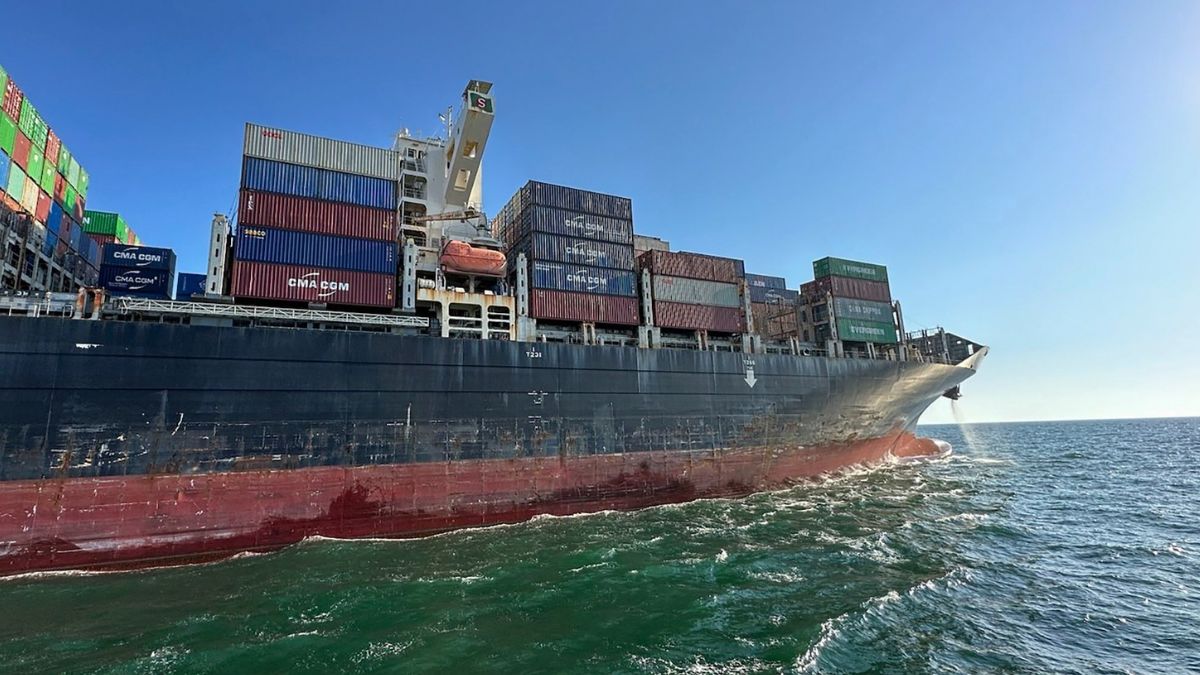Prime Minister Narendra Modi’s second win in the Lok Sabha elections and the growing unrest in the Persian Gulf call for a careful look at India’s foreign policy on Iran. Such an analysis has to take into consideration various factors and all the countries in the mix, as well as how the Modi government ought to balance often contrary, conflicting interests .
Iran ties essential for India
Having been described as a “strategic game changer”, the Chabahar port agreement between India and Iran was a huge step forward in New Delhi’s involvement in the Persian Gulf and, through the port, to Afghanistan and Central Asia. The port’s position as a gateway to the Indian Ocean as well as its landward geography towards Central Asia makes it an ideal regional transhipment hub, as it offers the shortest route to a deep water port along with Gwadar in Pakistan. The much-delayed, ambitious International North- South Transport Corridor ( INSTC ) is expected to make use of this very port.
The Chabahar port’s access to Afghanistan and Central Asia makes Iran crucial to India’s interests abroad, and the bilateral ties between the two nations is more than just a transactional relationship of buying and selling oil. India’s growing interest in Central Asia is evinced most recently by its induction to the Ashgabat Agreement in 2018 (a transport and transit agreement for Central Asia and the Persian Gulf) and the India-Central Asia Dialogue , which began in January.
Although this article discusses India’s policy on Iran, the Afghanistan and Central Asian dynamic is inseparable from the cost-benefit analysis in terms of the trade, connectivity and strategic gains a foothold in Iran gives India. The current Indian investment to connect Afghanistan with Chabahar is the first step in weaning Kabul off the Pakistani dependence forced on it, as well as the perceived importance of Pakistan vis-à-vis Afghanistan for Western countries.
As far as Central Asia is concerned, India’s policy on the region centres around two objectives — natural resources and, more importantly, connectivity to and through the region.
A brief look at a map makes it clear that only Iran has the ability and wherewithal to assist India in this endeavour, and if not for Iran, India can expect to remain disconnected from affairs in Central Asia for the foreseeable future, as well as relegate the INSTC to the records room. The promise of cheap and fast connectivity to Afghanistan, Central Asia, Russia and Europe ensures that India has to fight to keep this bilateral relationship alive.
India’s growing US ties
Diplomats and academicians around the globe applauded the decision to appoint former foreign secretary S Jaishankar the Minister of External Affairs. Having served at various positions of seniority in the MEA’s Americas Division as well as the Indian Embassy in Washington DC, his diplomatic career has seen several crucial landmarks in the US-India relationship, especially with regard to defence cooperation. Jaishankar’s appointment can, hence, be seen as an accurate indicator of India’s growing tilt towards the US, which is expected to continue over the next five years. While this bilateral relationship itself is fraught with complications of its own (trade, Pakistan, Russia, etc), China’s influence is most important to this article.
India and the US both recognise that the threat from China provides impetus to their bilateral relationship. This is reflected in their increased defence cooperation, such as the Strategic Trade Authorisation-1 status accorded to India, a new bipartisan bill tabled in the US Senate, and the much-touted signing of the GSOMIA, LEMOA and COMCASA agreements (foundational agreements for inter-operability between the two militaries). While the two countries appear to be natural allies, several commentators and leaders on both sides seem to mistakenly construe this for carte blanche in the demands they make of each other, as stated by Suhasini Haidar recently.
With the words “strategic autonomy” being bandied about a great deal, Indian commentators must remember the skewed nature of this dependency between the two nations. In the event of non-cooperation, the US has other regional allies to rely on to counter China, such as Japan and South Korea, among others. While these may not be as effective as a counter-weight to China, they have the advantage of having existing, functional defence relationships with the US, unlike India. India, however, has no comparable alternative to turn to. The other great power, Russia, enjoys a close defence relationship with China and cannot provide assistance in defence and intelligence in the same league the US does.
While any attempts to coerce the direction of India’s foreign policy must be shot down, these considerations ensure India must perform a significant balancing act in its approach to Iran.
Recent developments
After the US’ withdrawal from the Joint Comprehensive Plan of Action (JCPOA), India received a waiver for oil purchases from Iran that was in place till May, now bringing India back to the pre-JCPOA era of sanction-dodging to purchase oil from Iran. As no sanction-laden entity is involved in operating the Chabahar port yet , India’s key investment in the country is currently absolved of triggering sanctions, provided relations between the US and Iran remain the same.
Iran’s interest in keeping the Chabahar project alive is that of maintaining one of the few projects where foreign investment and infrastructure is allowed. Therefore, it is expected that Ayatollah Khamenei will not allow any companies linked with sanctions to participate in the project, provided relations between the US and Iran remain the same.
This qualification, on which the success of the Chabahar project hinges, appears to be on the brink of revision as tensions flare in the Persian Gulf. In May, four ships were attacked in the Persian Gulf, with the US saying the attacks were “ almost certainly from Iran ”, while Iran called the claims “laughable”. This was followed by threats by Iran to exceed the limits on uranium enrichment placed by the JCPOA, the US and UK blaming Tehran for attacks on two ships in June and the most recent incident of Iran shooting down a US Navy drone , nearly triggering a US military response .
Whether one can expect these heightened tensions near the Strait of Hormuz to reduce remains to be seen. The current evidence being ambiguous about the identity of the aggressor, the unrest itself can be blamed on America’s unilateral withdrawal from the JCPOA, as well as the sub-conventional warfare the Islamic Revolutionary Guard Corps wages in the region, from Yemen to Syria. The US’ withdrawal from the JCPOA empowered hardliners in Iran to take more aggressive actions in the region and also ensured that Iran didn’t receive the economic benefits promised to it in the nuclear deal.
As it is impossible for the countries trying to salvage the JCPOA to provide Iran with guarantees of economic benefits in the next few weeks , it is extremely likely Iran will break through the uranium enrichment limits laid down in the JCPOA and possibly begin producing highly enriched uranium, as well. Against a backdrop of continuing Iranian attacks (perceived or real) on US interests in the region and the threat of further uranium enrichment, President Donald Trump has ominously promised additional economic sanctions on Iran, the very reason the problem began in the first place.
Balancing act a must
In the absence of a permanent mechanism to integrate Iran with the world — like the European INSTEX — Iran’s economy will continue to suffer, pushing the country to greater hostility in the region. This will manifest itself through increased proxy warfare and increased development of nuclear capabilities, which will, in turn, push away even the remaining countries trying to salvage the JCPOA. In such an event, expect the beginnings of a ‘ Tanker War ’ again and new highs in terms of militarisation of the Persian Gulf. The slow ascension of the escalation ladder in this conflict will be mirrored by a decreasing possibility of India continuing operations in Chabahar and subsequently its extended strategic policy in Central Asia and beyond.
Earlier, commentators suggested that India can play a larger role in mediating between hostile countries like the US and Iran, considering its cordial relations with both. This should now not be considered a suggestion, but a necessity. India must act multilaterally with the P5+1 (minus the US) countries working to repair what’s left of the JCPOA and play a bigger role in delivering promises to Iran to alleviate its economic woes. India must also engage bilaterally with the US and Iran — with the US to ensure no future protests over the Chabahar agreement and with Iran to look for ways to defuse its hostile trajectory, nuclear and regional.
India might also be well suited to attempt to defuse hostilities between the two nations with diplomats like Gaddam Dharmendra in play, the current Ambassador to Iran who has also served as first secretary in the Indian Embassy in Washington DC.
Additionally, while India has the option to purchase oil from other countries, it must pull out all stops to ensure that it continues to source some oil from Iran. The benefit to India is that it can obtain cheaper oil in lieu of heightened tensions, but more importantly, it provides Iran a meagre relief from the economic strain it faces. It can also ensure that the bilateral relation between India and Iran does not rest on Chabahar alone.
Be in no doubt — if Iran feels India is not doing enough in terms of assistance bilaterally and multilaterally, it will gladly turn to China to develop Chabahar, a country that isn’t required to perform the same balancing act India does. China will happily accede to an offer of a foothold near the Persian Gulf and having stake in two deep-water ports with access to Central Asia (the other being Gwadar). Considering the downside in not acting proactively and extensively, one can hope India’s foreign policy establishment is already entrenched in various discussions about Iran around the world, rather than sitting sure the current crisis will have no ramifications for the country.
The author is a research assistant with the Institute of Chinese Studies, New Delhi


)




)
)
)
)
)
)
)
)